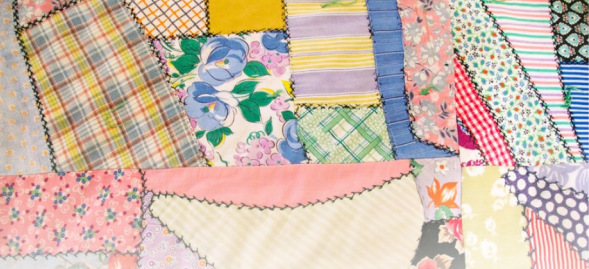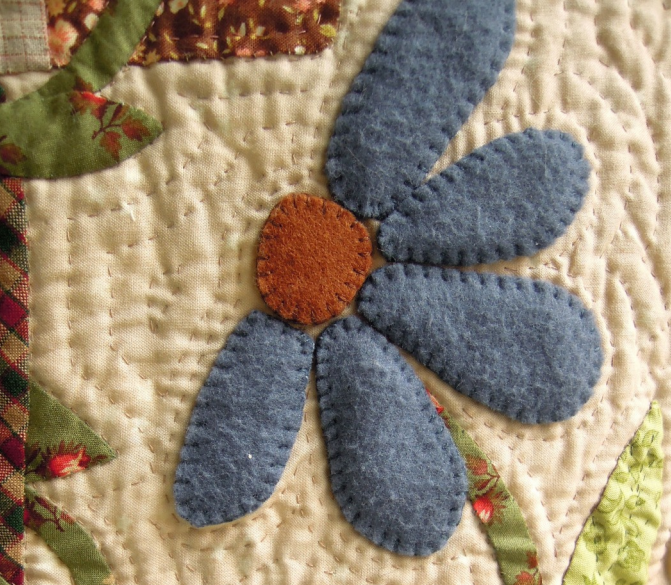
Traditional American quilts are made up of three layers – the patchwork or pieced top, the batting or wadding (that’s the layer that gives the quilt warmth and substance) and finally the backing fabric. These three layers are held together by the process of quilting, ie the technique of joining layers of fabric with stitches.
The processes of piecing – or joining smaller pieces of fabric together to make the large quilt top – and quilting actually appear in recorded history as early as the ancient Egyptians. There are descriptions of various items, such as bedding and sails pieced together from different textiles and skins as early as 1000 BC!
During the Crusades European soldiers learned from north Africans that quilted clothing could offer some protection against wounds, as well as providing a comfortable under layer for chain mail or armour if they were lucky enough to have any. The concept of quilting quickly caught on and so winter garments and bedspreads began to be quilted too. In England, William Shakespeare famously bequeathed his second best bed and furnishings to his wife. This would have comprised a whole set of matching quilts, hangings and so on – which she’d probably have stitched herself in any case! It seems likely that piecework was also being stitched in Europe at this time, and there is still debate whether the technique travelled from England and Holland to the New World or the other way around. Whichever is true, the early history of the American patchwork quilt follows quite naturally the history of the earliest Americans themselves.
These early colonists arrived on the east coast believing they’d discovered an earthly paradise, but sadly this proved not to be the case and before they saw their first spring, more than half had died of starvation and pneumonia.
The colonies were under supplied and unprepared in their early years and so the colonists desperately improvised ways to repair or replace the items they’d brought with them – and invent things they’d never anticipated needing. They learned vital survival skills from the indigenous population, whilst their country of origin simply gave them the Navigation Acts, laws designed to protect England’s trade monopolies, especially in textiles. It became illegal for the colonists to manufacture their own textiles or to buy them from any country except England. Unbelievably in fact, it was illegal for anyone trained in textile manufacture to emigrate to America!

During these early years life was very hard for the colonists as they struggled to establish a foothold in their new country. It was at this time that the crazy quilt was invented. A lovely example is shown above, but the earliest versions wouldn’t have been as visually pleasing, being made from clothes and bedclothes that had already been used until they fell apart, cut down for the children and used again and again until finally they were cut up to salvage every usable scrap and sewn together to serve as bedding. These early quilts would’ve been filled with whatever their makers had to hand – dried leaves, scraps and rags and even shredded paper, and so in many ways they symbolise the hardship and frustration of the early years in New England.
But times were changing and by the late seventeenth century the colonies had passed laws in defiance of the Navigation Acts requiring every woman and child to spin a certain amount of flax every day. Sheep were being raised and so now quilts could be stuffed with fleece, which must have been warmer, though probably a lot smellier than rags or paper! Best of all, cottons began to be exported to both England and America by the East India Company – though the British vested interests fought back.
I hope you’ve found the first part of our little history interesting…be sure to check back next week for part two!
Want more hints & tips? Then click below to get our free newsletter – you’ll even get some fab free patterns too…
Really interesting about the history of quilting.